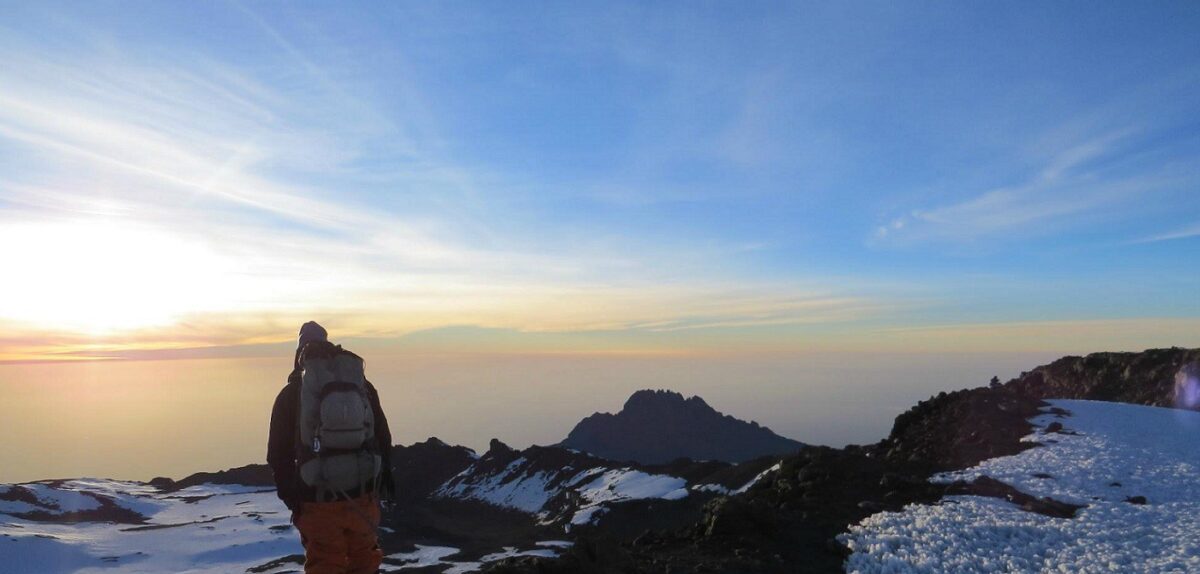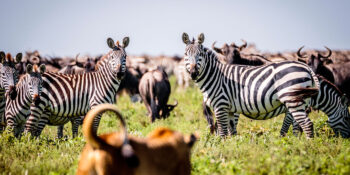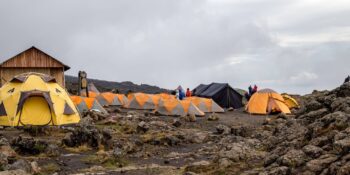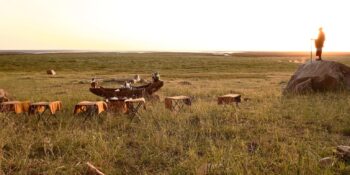RONGAI ROUTE
Description
This route is regarded as a lower traffic and easier route compared to those on the southern slopes. It’s advantages are a more gradual ascent in terms of terrain which allows for excellent acclimatisation plus we include an additional days acclimatisation so you can enjoy the stunning scenery from Mawenzi camp. The days are shorter and less demanding on the Rongai route.
It takes five days ascending through the forest, onto the heathland and to the summit coming from the NNE side of the mountain and after summiting there are two days of descent and exit through Mweka Gate on day seven. The trip is a great opportunity to see diverse vegetation and wide-eyed views especially from higher camps.
| DEPARTURE/RETURN LOCATION | Arusha City |
| DEPARTURE TIME | Please arrive at least a day before the Safari. |
| INCLUDED |
|
Itinerary
Day 1: Rongai Gate 1,950m/6,398ft to the 1st Caves Camp 2,600m/8
Hiking time: 5 hours, Distance: Approximately 8 kilometers (4.97 miles), Habitat: Forest (Montane).Today we will register at the Marangu park gate, after which we will transfer (approximately 2 ½ hours) to the Rongai trailhead. Meet your guide and porters before we begin the hike from the Nale Moru village. The small winding path crosses maize fields before entering pine forest, and then climbs gently through a forest. The trail is not at all steep, but is rather a gentle hike through beautiful country. The first night’s camp is at First Cave Camp where there is a toilet and a wooden table with benches, but no hut. Water can be found just down the trail below First Cave.
Day 2: 1st Cave camp 2,600m/ 11,319 ft to Kikelewa Cave 3,600m/11,811ft
Hiking time: 6 – 7 hours, Habitat: Moorlands. The trail continues up towards Kibo, passing Second Cave en-route, and reaching Kikelwa Cave. The views start to open up and you begin to feel you’re on a really big mountain! Water is in the obvious stream below the cave, although you might have to wander downhill a way to find some. Overnight at 3rd Cave camp (Kikelewa Caves).
Day 3: Critical acclimatization at Kikelewa Cave 3,600m/11,811ft
Hiking time: 3 hours. We will spend another night at this height helping you gain the acclimatization needed for a safer journey to altitude. This is where we differ. We want you to get to the summit so taking this extra day will significantly improve your chances at success. We will hike up to 4,000m/ 13,123ft with some great views of Kilimanjaro and then head back down to Kikelewa cave camp at 3,600m/ 11,811ft.
4 Day: Kikelewa Cave 3,600m/11,811ft to Mawenzi Tarn Camp 4,330m/14,206ft
Hiking time: 3 – 4 hours, Habitat: Moorlands. A short but steep climb up grassy slopes offers superb views of this wilderness area. The vegetation zone ends shortly before you reach your next camp at Mawenzi Tarn spectacularly situated beneath the towering spires of Mawenzi. Spend the afternoon acclimatizing and exploring the area.
Day 5: Mawenzi Tarn Camp 4,330m/14,206ft to the Kibo Hut 4,700m/15,420ft
Hiking time: 4 – 5 hours, Habitat: Alpine desert.Continue ascending on the east side of Kibo, crossing the saddle between Mawenzi and Kibo taking 4 to 5 hours to reach Kibo Hut. The remainder of the day is spent resting in preparation for the final ascent, which begins around midnight. Overnight at Kibo Camp.
Day 6: Summit Attempt
Summit Attempt! Kibo hut 4,700m/15,420ft to the Uhuru Peak 5,895m/19,341ft to the Horombo Hut 3,720m/12,205ft. Hiking time: 8 hours to Uhuru Peak then 6 hours to Horombo, Habitat: Stone scree / ice-cap summit, Distance: Approximately 6 kilometers ascent (3.73 miles), 21 kilometers (13 miles) descent. We will rise around 11.30 pm, and after some tea and biscuits we will shuffle off into the night. This is where the going really gets tough. The first section of the trail consists of a rocky path to the Hans Meyer Cave 5,150m/16,896ft, also a good resting spot. The path then zig-zags up to Gillman’s point 5,681m/18,638ft, which is located on the crater rim. This section is very steep with a lot of stone scree, requiring a great physical and mental effort. This is probably the most demanding section of the entire route, so we will move very slowly. From Gillman’s Point you will normally encounter snow all the way up to Uhuru peak 5895m/19,341ft, the highest point in Africa. Total exhilaration and satisfaction – we made it! Weather conditions on the summit will determine how long we can spend enjoying our success and taking photographs, before the 3-hour descent back to the Kibo Hut. After a short rest we will gather all our gear for the ascent and head down to Horombo Hut (3 hours) where we will stay overnight. The return to Horombo hut will seem surprisingly fast compared to the ascent. The total time spent walking on this day is around 14 hours, so be prepared for a very tough day. Later in the evening you enjoy your last dinner (with soft drinks and beer for sale at the camp office) on the mountain and well-earned sleep, filled with memories and stirring emotions.
Day 7: Horombo hut 3,720m/12,205ft to Marangu Gate 1,980m/6,496ft.
Hiking time: 6 hours, Distance: Approximately 27 kilometers (16.8 miles). After breakfast we will continue the descent (6 hours), passing the Mandara Hut, down to the Marangu Gate. At Marangu gate we will sign each of our names and details in the register, and each successful climber will receive their summit certificate. Those climbers who reached Gillman’s Point are issued with green certificates and those who reached Uhuru Peak receive gold certificates. We will then drive back to Arusha for a long overdue hot shower, dinner and celebrations!




